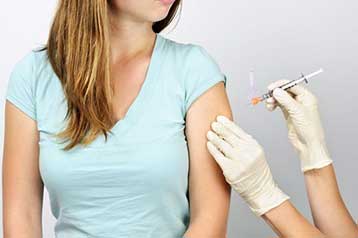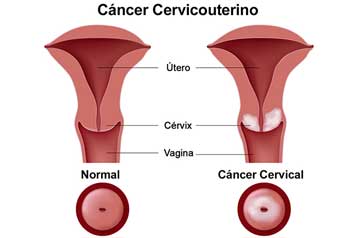Yellow Fever Vaccine
Yellow fever is preventable by a relatively safe, effective vaccine. For all eligible persons, a single injection of 0.5 mL of reconstituted vaccine should be administered subcutaneously.
Adverse Reactions
General Events
Reactions to yellow fever vaccine are generally mild. Vaccine recipients have reported mild headaches, myalgia, low-grade fevers, or other minor symptoms that may begin within days after vaccination and last 5-10 days. In clinical trials, the incidence of mild adverse events has been ~25%, but many events may have been unrelated, as the trials were not placebo-controlled. Approximately 1% of vaccinees find it necessary to curtail regular activities. Immediate hypersensitivity reactions, characterized by rash, urticaria, or asthma or a combination of these, are uncommon (incidence <0.8 per 100,000 vaccinees) (9).
Yellow Fever Vaccine-Associated Neurologic Disease
Historically, yellow fever vaccine-associated adverse events were seen primarily among infants and presented as encepha-litis. Since 1992, six cases of encephalitis among adult recipients of yellow fever vaccine have been reported to the U.S. Vaccine Adverse Event Reporting System (VAERS) (10,11; unpublished data, CDC). In addition, 10 cases of autoimmune neurologic disease have been reported to VAERS, including patients with Guillian-Barré syndrome and acute disseminated encephalomyelitis. All patients with yellow fever vaccine-associated neurologic disease (YEL-AND) had onset of illness 4-27 days after vaccination. All cases were in first-time vaccine recipients. The risk for YEL-AND does not appear to be limited to infants, and the overall reported rate in the United States is estimated to be approximately 0.5 per 100,000 doses distributed.
Yellow Fever Vaccine-Associated Viscerotropic Disease
A serious adverse reaction syndrome has been described within the last 10 years among recipients of yellow fever vaccines produced by several different manufacturers. This syndrome was previously reported as febrile multiple organ system failure and is now called yellow fever vaccine-associated viscerotropic disease (YEL-AVD). Since 1996, 12 cases of YEL-AVD, a disease that is clinically and pathologically similar to naturally acquired yellow fever, have been reported in the United States (10,11; unpublished data, CDC); an additional 24 suspected cases have been identified worldwide as of August 2006 (12)-22; unpublished data, CDC). All U.S. cases required intensive care after experiencing severe illness variably characterized by fever, hypotension, respiratory failure, elevated hepatocellular enzymes, lymphocytopenia, and thrombocytopenia. Seven (58%) of the U.S. cases have been fatal. In several cases for which tissue samples were available, immunohistochemical staining demonstrated viral antigen in liver, and sometimes other tissues including lung, kidney, spleen, lymph node, brain, and smooth muscle. In many cases, tissue samples were not available for histopathologic review or detection of virus. All cases reported thus far have occurred in primary vaccinees. Yellow fever vaccines must be considered as a possible, but rare, cause of YEL-AND that is similar to fulminant yellow fever caused by wild-type YFV. Crude estimates of the reported incidence of YEL-AND in the United States indicate an overall reporting rate of 0.3 - 0.5 cases per 100,000 doses of vaccine distributed. This frequency appears to be higher for persons older than 60 years of age; the estimated reporting rate in this group is approximately 1.8 cases per 100,000 doses distributed.
Because of recent reports of deaths due to yellow fever among unvaccinated travelers to yellow fever-endemic areas, yellow fever vaccination of travelers to high-risk areas should be encouraged as a key prevention strategy; however, because severe adverse events can follow yellow fever vaccination, physicians should be careful to administer the vaccine only to persons truly at risk for exposure to yellow fever. Studies are being conducted to clarify the cause and risk factors for these rare serious adverse events associated with yellow fever vaccine.
Precautions and Contraindications
Age
The risk for adverse reactions appears to be age related. Infants younger than 6 months of age should not be vaccinated because they are more susceptible to the serious adverse reaction of YEL-AND (also known as postvaccinal encephalitis) than are older children (23). Immunization should be delayed until an infant is at least 9 months of age. (See Chapter 8 for a discussion of yellow fever immunization for infants and children.) In unusual circumstances, physicians considering vaccinating infants aged younger than 9 months should contact the Division of Vector-Borne Infectious Diseases (970-221-6400) or the Division of Global Migration and Quarantine (404-498-1600) at CDC for advice.
Analysis of adverse events passively reported to VAERS indicate that persons older than 60 years of age may be at increased risk for systemic adverse events following vaccination compared with younger persons. The risk of any serious adverse event following vaccination has been estimated at about 4 per 100,000 doses for people aged 60-69 years old and 7.5 per 100,000 doses for people 70 years and older (24). Travelers older than 60 years should discuss with their physicians the risks and benefits of vaccination in the context of their destination- specific risk for exposure to YFV.
History of Thymus Disease
A history of thymus disease has recently been identified as a contraindication to yellow fever vaccine (13). Four (11%) of the 36 vaccine recipients with YEL-AVD reported worldwide have had a history of diseases involving the thymus, all of which are extremely rare, suggesting that compromised thymic function is an independent risk factor for YEL-AVD. One fatal case in the United States occurred in a 67-year-old woman who had a history of thymectomy for a malignant thymoma approximately 2 years before vaccination. A second case in the United States occurred in a 70-year-old man who had a history of hyperthyroidism, myasthenia gravis, and thymectomy for thymoma 20 years before vaccination. This patient survived. A third case was reported from Switzerland and occurred in a 50-year-old man who had a history of thymectomy due to thymoma 8 years prior to vaccination. This patient also survived. Most recently, a fatal case (male, age 44 years) of viscerotropic disease with fulminant hepatic failure temporally associated with yellow fever vaccine was reported from Colombia. This patient had a thymectomy due to benign thymoma 2 years before vaccination.
In addition to concerns about vaccinating elderly travelers, health-care providers should be careful to ask about a history of thymus disorder, including myasthenia gravis, thymoma, or prior thymectomy, when screening a patient before administering yellow fever vaccine. For persons with such a history, alternative means of prevention should be recommended, if travel plans cannot be altered to avoid yellow fever-endemic areas.
Pregnancy
The safety of yellow fever vaccination during pregnancy has not been well established, and the vaccine should be administered to pregnant women only if travel to an area with risk of yellow fever is unavoidable. If international travel requirements, rather than an increased risk of acquiring yellow fever, are the only reason to vaccinate a pregnant woman, efforts should be made to obtain a waiver letter from the traveler's physician. Pregnant women who must travel to areas where the risk for yellow fever infection is high should be vaccinated. Despite the apparent safety of this vaccine, infants born to these women should be monitored closely for evidence of congenital infection and other possible adverse effects resulting from yellow fever vaccination. Since pregnancy may affect immunologic function, if vaccination of a pregnant woman is deemed necessary, serologic testing to document a protective immune response to the vaccine can be considered (25;26). To discuss the need for serologic testing, the appropriate state health department or CDC's Division of Vector-Borne Infectious Diseases at 970-221-6400 or Division of Global Migration and Quarantine at 404-498-1600 should be contacted for more information.
Breast-feeding
Whether this vaccine is excreted in breast milk is not known. There have been no reports of adverse events or transmission of the vaccine virus from nursing mother to infant. As a precautionary measure, vaccination of nursing mothers should be avoided, because of the theoretical risk of vaccine virus transmission to the breastfed infant. When travel of nursing mothers to high-risk yellow fever endemic areas cannot be avoided or postponed, these women should be vaccinated.
Immunosuppression
Infection with yellow fever vaccine virus poses a theoretical risk for travelers with immunosuppression in association with HIV infection; leukemia, lymphoma, or generalized malignancy; with a history of thymus disease or thymectomy; or who are receiving corticosteroids, alkylating drugs, antimetabolites, or radiation. There is a single report of a 53-year-old patient with undiagnosed HIV infection who had a low CD4שׂ count (108 cells/mm3) and who developed YEL-AND and died of meningoencephalitis (27). Other HIV-infected people with CD4 counts above 200 cells/mm3 have been successfully vaccinated without serious adverse effects from the vaccine. Immunosuppressed patients who are unable to effectively resist viral infections should not be vaccinated. If travel to a yellow fever-endemic zone is necessary for such individuals, patients should be advised of the risks posed by such travel, instructed in methods for avoiding vector mosquitoes, and supplied with vaccination waiver letters by their physicians. Low-dose (i.e., 20 mg prednisone or equivalent/day); short-term (i.e., less than 2 weeks) systemic corticosteroid therapy or intra-articular, bursal, or tendon injections with corticosteroids; and intranasal corticosteroids are not thought to be sufficiently immunosuppressive to constitute an increased hazard to recipients of yellow fever vaccine (see Chapter 9).
Persons who are HIV-infected but do not have AIDS or other symptomatic manifestations of HIV infection, who have established laboratory verification of adequate immune system function (e.g., CD4שׂ T lymphocyte cell counts >200/mm3), and who cannot avoid potential exposure to YFV should be offered the vaccination and monitored closely for possible adverse effects (23). If international travel requirements are the only reason to vaccinate an asymptomatic HIV-infected person, rather than an increased risk for acquiring yellow fever, efforts should be made to obtain a waiver letter from the traveler's physician. Family members of immunosuppressed or HIV-infected persons who themselves have no contraindications can receive yellow fever vaccine.
Data regarding seroconversion rates after yellow fever vaccination among asymptomatic HIV-infected persons are limited, but indicate that the seroconversion rate among such persons may be reduced (23). Because vaccination of asymptomatic HIV-infected persons might be less effective than that of persons not infected with HIV, measurement of the neutralizing antibody response to vaccination should be considered before travel. Physicians should consult the applicable state health department or CDC's Division of Vector-Borne Infectious Diseases at 970-221-6400 or Division of Global Migration and Quarantine at 404-498-1600, for more information.
Hypersensitivity
Live yellow fever vaccine is produced in chick embryos and should not be given to persons hypersensitive to eggs. Generally, persons who are able to eat eggs or egg products may receive the vaccine. However, some egg-sensitive persons are not allergic to cooked eggs and may not know they are susceptible to allergic reactions following raw eggs or egg-containing vaccines. If vaccination of a person with a questionable history of egg or chicken hypersensitivity is considered essential because of high risk for acquiring yellow fever, an intradermal test dose of vaccine may be administered under close medical supervision. Specific directions for vaccine skin testing are found in the vaccine package insert. In some instances, small test doses of vaccine administered intradermally have led to an antibody response. Gelatin is used as a stabilizer in several vaccines, including yellow fever vaccine, and might be the stimulus for some allergic reactions to yellow fever vaccine. If international travel regulations are the only reason to vaccinate a traveler hypersensitive to eggs or gelatin, efforts should be made to obtain a waiver.
Simultaneous Administration of Other Vaccines and Drugs
Studies have shown that the immune response to yellow fever vaccine is not inhibited by administration of certain other live, attenuated vaccines concurrently or at various intervals of a few days to 1 month (1) (see Chapter 1).
A prospective study of persons given yellow fever vaccine along with 5 mL of commercially available immune globulin showed no alteration of the immunologic response to yellow fever vaccine when compared with controls (28). Although chloroquine inhibits replication of YFV in vitro, it does not adversely affect antibody responses to yellow fever vaccine in persons receiving the drug as antimalarial prophylaxis (29).
To read more articles on the subject of Traveler Health we recommend visiting the following addresses:
- Traveler Health Index
- Vaccinations and Travel
- How to Use Insect Repellents Safely
- Tuberculosis Information for International Travelers
Source
centers for Disease Control and Prevention
National center for Infectious Diseases, Division of Global Migration and Quarantine
http://www.cdc.gov/






